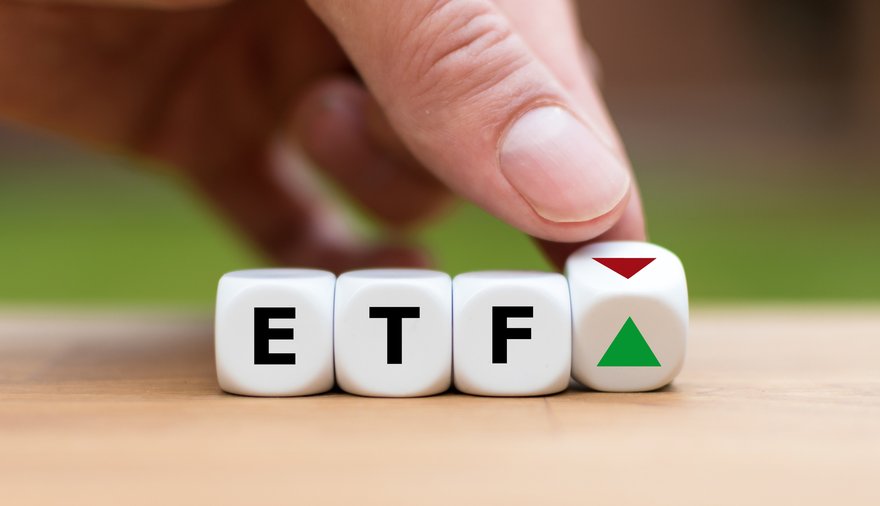The banking industry can be an exciting place to invest. Valuations are often low, and banking can be a profitable business model even in the face of rising interest rates and inflation. However, the industry isn’t without its risks. It isn’t just the recent regional banking turmoil – there have been several major banking crises throughout modern history, and this can make investing in individual bank stocks seem scary to the average investor.

Fortunately, there are some excellent exchange-traded funds, or ETFs, that can give you exposure to bank stocks in your portfolio without relying too much on any single bank. There are ETFs that offer broad exposure to the financial sector. Some focus specifically on banks, while others focus on specific types of banks, such as regional bank stocks.
5 Top Bank ETFs
5 Top Bank ETFs
There are plenty of bank and financial sector ETFs in the market, so this isn’t an exhaustive list. However, these five ETFs offer exposure to bank stocks in different ways and for reasonable investment fees.
1. Financial Select Sector SPDR ETF
1. Financial Select Sector SPDR ETF
With nearly $31 billion in assets under management, the Financial Select Sector SPDR ETF (XLF -0.02%) is the largest ETF focused on the financial sector. It tracks an index of financial sector companies in the S&P 500 and has a total of 73 different investments. Like most index funds, it's a market-cap-weighted fund, which means that larger companies carry more weight in the index. In a nutshell, this ETF is designed to reflect the overall performance of large-cap financial sector stocks.
It’s important to note that while banking is a large component of the ETF’s holdings, the financial sector (and, therefore, this ETF) also include insurance companies, financial services firms, and a few other types of businesses. Top holdings include Berkshire Hathaway (BRK.A -0.28%)(BRK.B -0.68%), which is technically classified as an insurance company, as well as JPMorgan Chase (JPM 0.49%), Visa (V 0.33%), Mastercard (MA -0.07%), Bank of America (BAC -0.13%), and Wells Fargo (WFC -0.56%). While this isn’t exactly a pure-play bank stock ETF, the additional diversification into tried-and-true businesses like Berkshire and the two massive payment network operators can be an attractive feature to many investors.
The Financial Select Sector SPDR fund is also one of the lowest-cost ways to invest in the financial sector, with a 0.1% gross expense ratio. As you’ll see, this is a remarkably low investment cost, translating to $1 in annual investment expenses for every $1,000 you invest.
Before we go on, it’s worth noting that an expense ratio is the percentage of a fund’s assets that go toward investment expenses each year. It isn’t a fee that you pay directly. Instead, it is simply deducted from the fund’s assets under management periodically. In other words, you’ll never even notice it happening, but it’s important to be aware of the investment fees you pay, as they can play a significant role in your long-term returns.
2. SPDR S&P Bank ETF
2. SPDR S&P Bank ETF
If you’re looking for more of a pure-play bank ETF, the SPDR S&P Bank ETF (KBE 0.7%) could be what you’re looking for. It is a relatively small ETF, with $1.2 billion in assets under management, and is a bit more expensive than the overall financial sector ETF discussed earlier. However, its 0.35% expense ratio isn’t exactly expensive, but it is on par with other specialized index funds. (Note: As a general rule, the more specialized an index fund is, the more you can expect to pay in investment fees, all other factors being equal.)
In a nutshell, the SPDR S&P Bank ETF invests in an index that consists of large money center banks, regional banks, diversified financial services providers, and more. It invests in 95 different stocks in all, and while it isn’t exactly an equal-weighted fund, it is more diversified than most market-cap-weighted ETFs and is called a “modified equal-weight index.” In short, it aims to provide fairly equal exposure to banks of all sizes and types.
None of the ETF’s holdings make up more than 2.7% of its total assets. Top holdings include First Citizens Bank (FCF 1.18%), New York Community Bancorp (NYCB -3.77%), Bank of New York Mellon (BK 0.89%), in addition to large banks such as JPMorgan Chase and Citigroup (C -0.32%).
3. SPDR S&P Regional Banking ETF
3. SPDR S&P Regional Banking ETF
With the turmoil in regional banking in 2023, the SPDR S&P Regional Banking ETF could be the most volatile on this list. However, if you see value opportunities in regional banking but don’t want to put your money into any single regional bank, this ETF could be a smart way to get diversified exposure.
Like the previous ETF, the SPDR S&P Regional Banking ETF has a moderate 0.35% expense ratio. It aims to track an index of regional bank stocks in the broader S&P indices and has 144 different stock positions. And since this fund is also a modified equal weight index, it doesn’t have too much exposure to any individual regional bank. To put it another way, if one of the banks held by the fund were to fail, your exposure would be rather limited.
The largest position held by the ETF accounts for about 4% of its total assets -- New York Community Bancorp. On the top holdings list, you’ll also find well-known names such as Regions Financial (RF 2.17%), M&T Bank (MTB 0.75%), Truist (TFC -0.13%), and Zions Bancorp (ZION 1.01%).
4. iShares U.S. Financials ETF
4. iShares U.S. Financials ETF
The iShares U.S. Financials ETF (IYF -0.2%) tracks a financial sector index that offers a somewhat different makeup than the other financial sector ETFs on the list. Specifically, you’ll find more banks and banking-adjacent businesses among its top holdings and fewer financial technology companies (no Visa and Mastercard, for example).
The ETF has a 0.39% expense ratio, which should certainly be taken into account. Top holdings include Berkshire Hathaway, JPMorgan Chase, Bank of America, Wells Fargo, S&P Global (SPGI 0.01%), and Goldman Sachs (GS -0.23%).
Related investing topics
5. Invesco KBW Bank ETF
5. Invesco KBW Bank ETF
Finally, for investors who want a pure-play banking ETF with a heavier concentration in its largest positions, the Invesco KBW Bank ETF (NASDAQMKT:KBWB) could be worth a closer look. The fund invests in a bank stock index and owns just 23 total positions. This is a market-cap-weighted fund, so even though it includes some small- and mid-cap banks, the larger bank stocks make up larger proportions of the fund’s assets.
For example, the top holding, JPMorgan Chase, makes up 10.8% of the ETF’s portfolio. The next largest, Citigroup, accounts for 10.1%. Other top holdings include Wells Fargo, Bank of America, and U.S. Bancorp. And it’s worth noting that, although they are technically classified as banks, this ETF doesn’t have exposure to the major investment banking firms like Goldman Sachs and Morgan Stanley (MS 0.1%).
The Invesco KBW Bank ETF has a 0.35% expense ratio, which is par for the course for a subsector-type ETF like this one. If your goal is to simply invest in a portfolio representative of the U.S. commercial banking industry, this could be the best ETF choice for you.
Are bank ETFs right for you?
Are bank ETFs right for you?
Obviously, there’s no one-size-fits-all banking ETF. After all, that’s why there are so many to choose from. But these five are some of the best examples, and most investors looking for banking exposure in their portfolio should be able to find a good match on this list.















